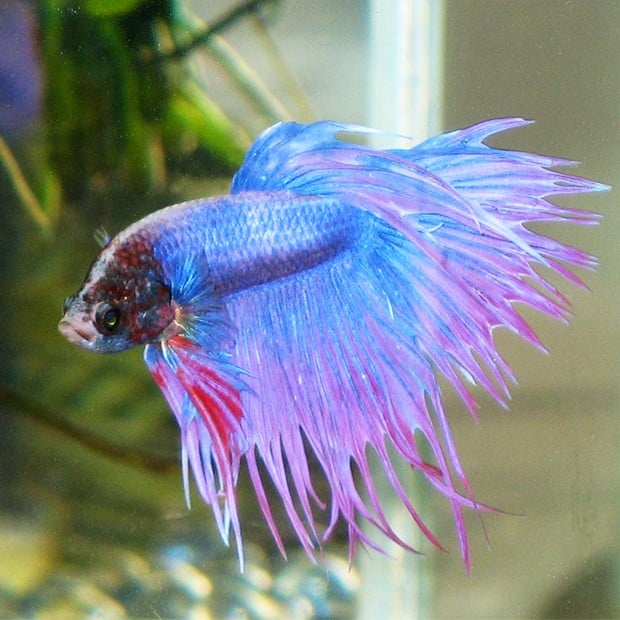Just How to Breed Betta Fish Efficiently: Professional Techniques and Insights for Hobbyists Aiming To Broaden Their Betta Collection
Breeding Betta fish calls for a nuanced understanding of genetics and ecological conditions, making it important for enthusiasts to approach the procedure with both diligence and treatment. Developing an ideal reproduction atmosphere, selecting the ideal pairs, and observing the details of their courtship behaviors are fundamental steps that can substantially impact the result. Moreover, the succeeding treatment of the fry is vital for guaranteeing their healthy growth. As we discover these essential parts, it becomes clear that effective reproduction is not practically the initial pairing however incorporates a broader method that merits cautious factor to consider.
Recognizing Betta Fish Genes
Recognizing the genes of Betta fish is crucial for successful breeding, as it influences characteristics such as shade, fin form, and actions. Betta fish show a varied array of colors and patterns, largely identified by their genetic makeup. The primary genes responsible for coloration consist of the "B" genetics for blue, "D" genetics for red, and the "C" genetics for color intensity. Breeders can manipulate these traits by selecting details moms and dad fish that show wanted characteristics.
Along with pigmentation, fin morphology is one more significant facet of Betta genes (betta fish). The shape and size of fins are influenced by various genetics, consisting of those that identify whether the fins are short, long, or veil-shaped. Recognizing these hereditary variations aids dog breeders predict the phenotypic end results of their children
Furthermore, behavioral characteristics such as aggression and territoriality can likewise be influenced by genes. These behaviors play an essential function in the breeding procedure, as they can impact spawning success and the total character of the resulting fry. By thoroughly comprehending these genetic principles, dog breeders can make informed choices, ultimately improving their breeding programs and accomplishing desirable results.
Preparing the Reproduction Atmosphere
Creating an ideal reproduction setting is vital for the successful recreation of Betta fish. The initial action in preparing this environment is to select an ideal reproduction tank, ideally ranging from 5 to 10 gallons.
Following, take into consideration using a sponge filter or an air stone to give gentle water circulation without developing strong currents that can stress the fish. It is necessary to mount plants or reproducing cones to supply concealing spots and promote comfort for the female during the spawning process. Drifting plants, such as Java moss or water sprite, can additionally create a more native environment while assisting in bubble nest structure by the man.
Prior to presenting the reproducing sets, make certain the water is conditioned and devoid of hazardous chemicals, such as chlorine or heavy metals. betta fish. Regular water modifications ought to be carried out to preserve optimal water quality, enhancing the chances of successful reproduction. With these prep work in area, the breeding environment will sustain the wellness and health of both Betta fish
Picking Reproduction Pairs
Picking the ideal breeding pairs is essential for achieving successful Betta fish recreation. When selecting your reproduction pairs, consider numerous visit site vital variables including health, personality, and genes. Healthy Betta fish exhibit vibrant shades, clear eyes, and active behavior. Picking fish that are complimentary from illness makes certain a much better chance of producing sensible children.
Temperament is an additional essential factor to consider, as Betta fish are understood for their hostile nature. It is suggested to pick a man and lady that show compatible personalities to lessen stress and anxiety during the reproducing process. A calm man can motivate a smoother courtship, while a lady that is too hostile might disrupt the procedure.
Genetic background additionally plays a significant function in the quality of the children. Reproducing fish that are genetically varied can minimize the threat of hereditary health and wellness issues and enhance the general vitality of the fry. It is helpful to research the lineage of both the male and lady, concentrating on preferable traits such as fin type, shade patterns, and dimension.
The Breeding Process
The breeding procedure of Betta fish calls for careful planning and interest to information to make certain a successful result. At first, it is essential to prepare a suitable breeding storage tank, ideally a 5-10 gallon fish tank with a temperature level kept at 78-80 ° F. The container should be geared up with a heating unit, filter (preferably sponge type to prevent strong currents), and a lot of water plants for the woman to hide.
When the atmosphere is set, present the picked reproducing set to the container, permitting them to accommodate. Observe their actions; the man will certainly present intricate courtship routines, consisting of flaring his fins and developing a bubble visite site nest. If the lady reveals passion, she will certainly show vertical stripes indicating readiness for spawning.
When the lady is receptive, the set will certainly engage in a breeding accept, during which the male feeds the eggs. Preserving optimum water problems during this duration is vital for the development of healthy and balanced Betta fry.
Caring for Betta Fry

Feeding Betta fry is vital, as they call for a diet high in protein. At first, they can be fed infusoria or liquid fry food, transitioning to carefully smashed top quality pellets as they grow. Feed small portions multiple times a day to encourage healthy growth without overwhelming the container with leftover food.

As they grow, monitor their development closely and divide any hostile individuals to prevent damage. By providing a supporting setting and appropriate nourishment, hobbyists can efficiently raise Betta fry right into vibrant, healthy fish, inevitably enhancing their reproduction undertakings.
Final Thought
Effective Betta fish reproduction calls for thorough focus to hereditary selection, environmental conditions, and treatment for the fry. By understanding the genes of Betta fish and preparing an appropriate breeding environment, hobbyists can enhance the chances of producing vibrant, healthy and balanced offspring.
Comments on “Exactly how to Select the Right Betta Fish for Your Aquarium”